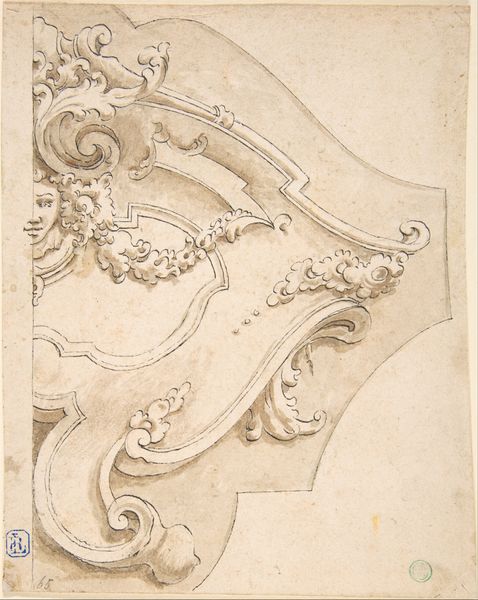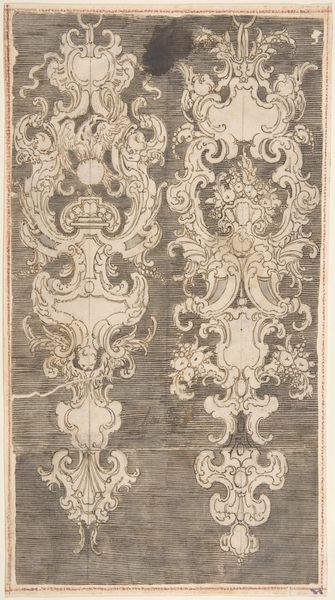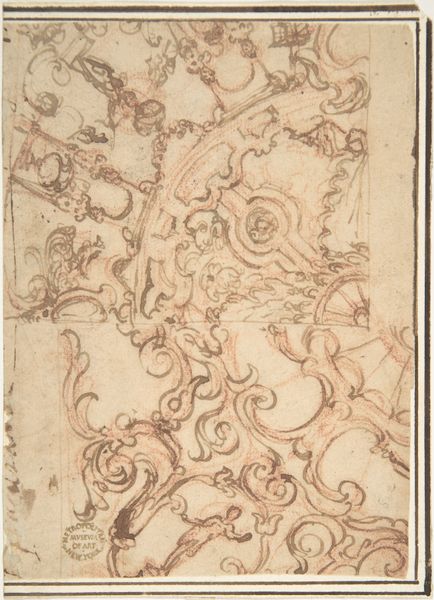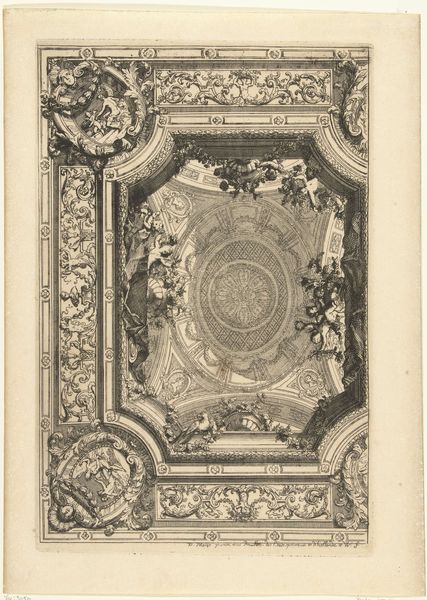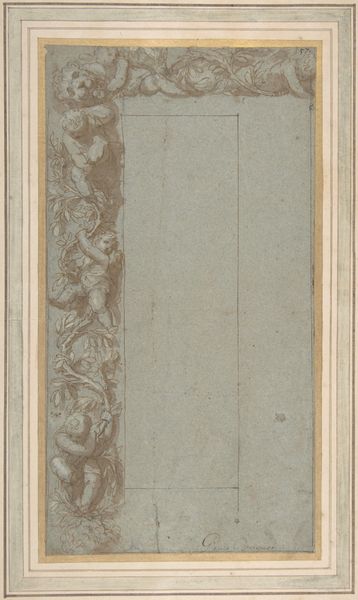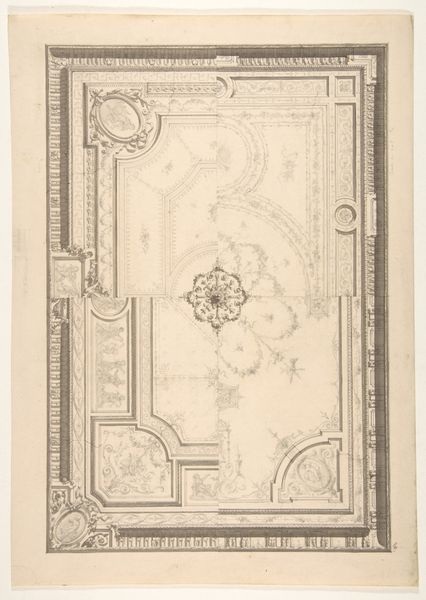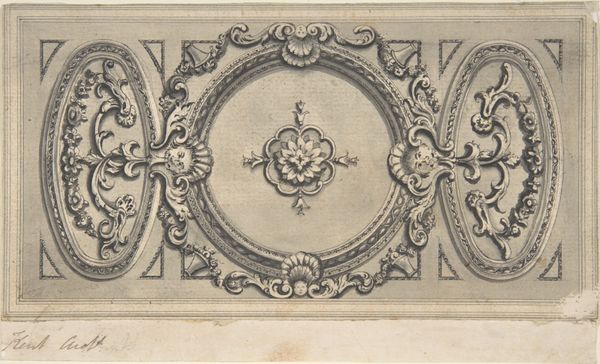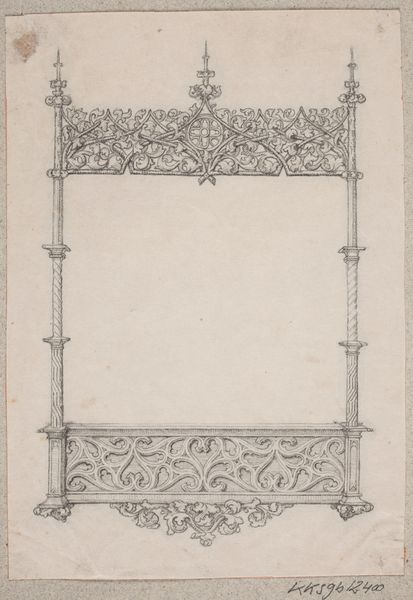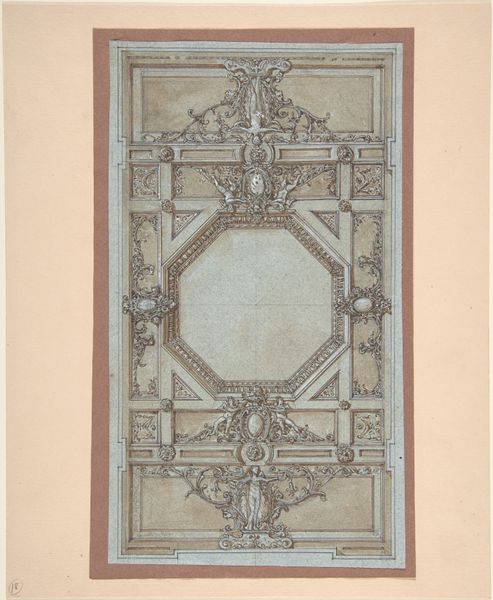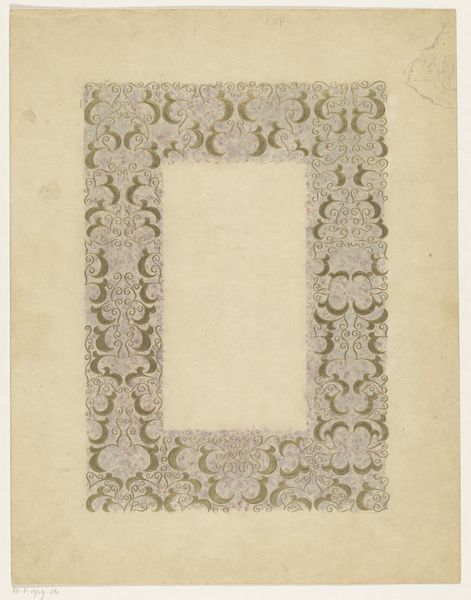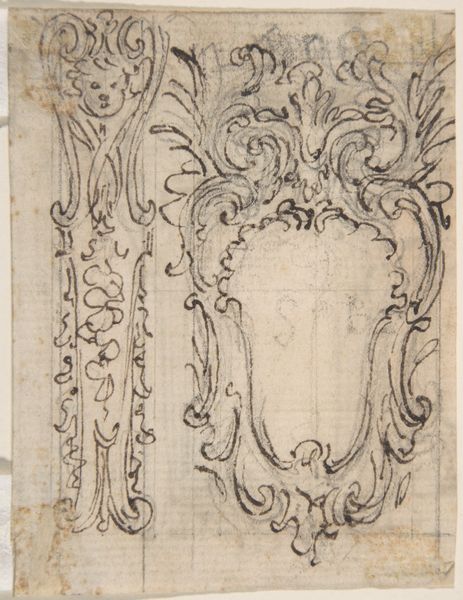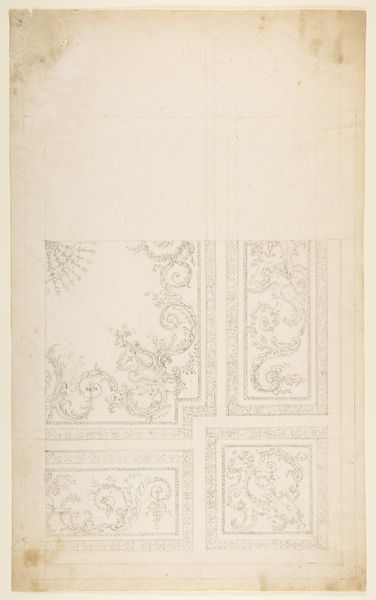
Designs for One Half of a Cartouche in the Rococo style 1700 - 1780
0:00
0:00
drawing, ornament, print, paper, ink
#
drawing
#
ornament
# print
#
paper
#
form
#
ink
#
line
#
watercolor
#
rococo
Dimensions: Sheet: 7 5/16 x 8 15/16 in. (18.6 x 22.7 cm)
Copyright: Public Domain
Curator: Look at the sinuous curves of this drawing. It is titled "Designs for One Half of a Cartouche in the Rococo style", and comes to us from sometime between 1700 and 1780. It's currently held here at the Met. Editor: Oh, what a frothy dreamscape! It’s as if sugared almonds have taken artistic form. It really evokes that airy, carefree feeling—almost decadent. Curator: It exemplifies the Rococo preoccupation with asymmetry and elaborate ornamentation. Think about the cultural context. Louis XV’s court was turning away from the rigid formality of his predecessor, embracing pleasure and the decorative arts. We can see this societal shift reflected here. Editor: The cherubs emerging from the swirls! It's that classic iconography of playful abundance. The Rococo took the Baroque language of Christian Triumph and transformed it into expressions of light secular delight. A visual representation of *joie de vivre*, wouldn't you agree? Curator: Precisely! But beyond joy, I see power, too. Consider who commissioned and consumed such designs. The aristocracy, reinforcing their status through displays of refined taste and lavish spending. It became almost an official language to indicate one's allegiances. Editor: Ah, but are we to dismiss pure aesthetics so easily? These shapes tap into something deeply primal. Those repeated motifs are reminiscent of vines and water – the source of life and constant flow. Curator: Never dismissing the aesthetic experience, only acknowledging its intertwined relationship with the socioeconomic currents. Even in ornamentation, there is always meaning and context that relates back to society. Editor: True enough. Still, losing myself in this composition makes it easier to appreciate the way symbols change across eras. Now I see both joy and deliberate status being signaled here! Curator: It highlights the complex dynamics of taste and social identity in 18th-century Europe. These weren’t just pretty decorations; they were declarations. Editor: Well, now, after our little trip, I am inclined to believe declarations of delight still reverberate strongly today.
Comments
No comments
Be the first to comment and join the conversation on the ultimate creative platform.


